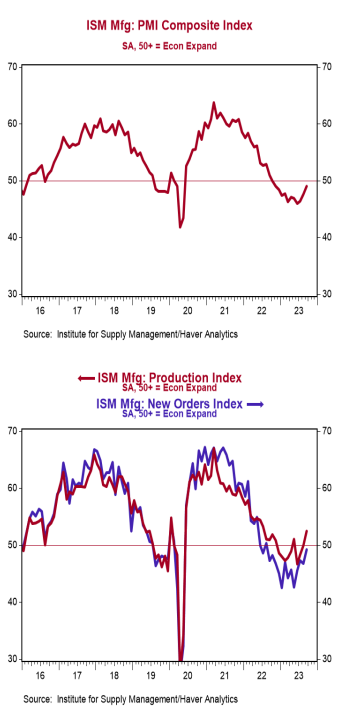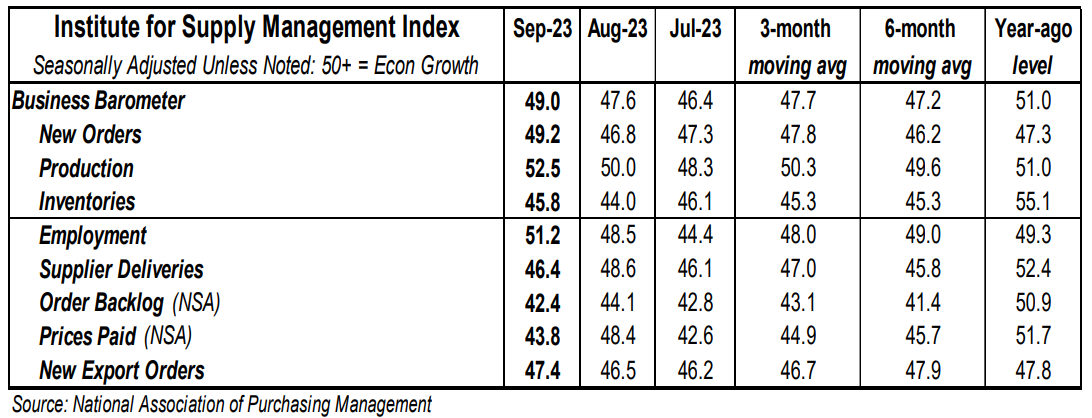- The ISM Manufacturing Index increased to 49.0 in September, beating the consensus expected 47.9. (Levels higher than 50 signal expansion; levels below 50 signal contraction.)
- The major measures of activity were mixed in September. The new orders index increased to 49.2 from 46.8 in August, while the production index rose to 52.5 from 50.0. The supplier deliveries index fell to 46.4 from 48.6 in August and the employment index increased to 51.2 from 48.5.
- The prices paid index declined to 43.8 in September from 48.4 in August.
Implications:
Activity in the US factory sector contracted for the eleventh month in a row in September, though at a slightly slower pace. Looking at the details, only five of eighteen industries reported growth in September. Survey respondents noted fears about recession, sluggish demand, and continued pressure from customers to be more cost competitive. We continue to believe a recession is lurking ahead and these comments signal the goods sector of the economy is likely to lead the way. Weakening demand was most easily seen in the new orders index, which remained in contraction for a thirteenth consecutive month in September. Meanwhile, the production index rebounded to 52.5 in September, the first expansionary reading in ten months. With the combination of less demand from consumers and built-up inventories at retailers, we don’t expect a significant rebound in manufacturing output. However, fewer orders and faster production have allowed factories to catch up on order backlogs. That measure fell to 42.4 in September and remains near the lowest readings since the 2008 Financial Crisis. The employment index, also jumped back into expansion territory in September, posting a reading of 51.2. However, this index has been extremely choppy recently, reflecting the uncertainty the industry is facing. Finally, on the inflation front, the prices index fell to 43.8 in September. In other news this morning, construction spending increased 0.5% in August. The gain was driven by large increases in home building and manufacturing facilities, which more than offset declines in commercial projects.





